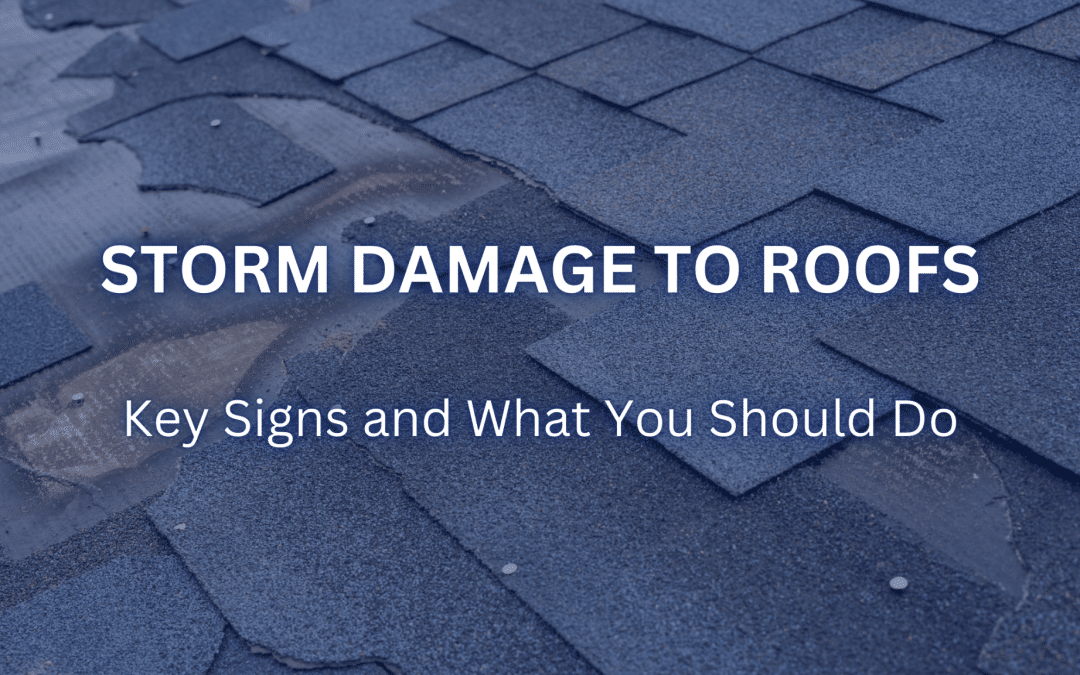Storm Damage to Roofs: How to Spot It and What to Do
Storm damage to roofs in New Mexico can strike hard and fast, leaving hidden issues that put your home at risk.
After high winds, heavy rain, or hail, many homeowners assume their roof is fine if they don’t see visible signs from the ground. Unfortunately, roof storm damage often hides in plain sight, waiting to cause water leaks, mold, or costly repairs months later.
The good news? Learning how to identify roof damage and knowing when to call a professional roofing contractor can protect your biggest investment. According to the Insurance Information Institute, hail damage alone costs U.S. homeowners billions every year. Don’t let your roof become part of that statistic.
This guide will help you recognize the common signs of a damaged roof, inspect safely from ground level, and take the right steps to minimize repair costs.
Common Signs of Storm Damage to Roofs
Storm damage isn’t always obvious. Here are the visible signs every homeowner should know:
Missing or Damaged Shingles
Wind storms often leave missing shingles, curled edges that curl upward, or cracks across the roof surface. Even if shingles remain installed, broken seals allow water damage to spread. Missing shingles expose the underlayment and roof deck, leaving your home more vulnerable to leaks.
Granule Loss
Hail and wind-driven rain can cause granule loss on asphalt shingles. These protective particles prevent UV breakdown, so missing granules shorten the life of your roofing material. Check gutters and metal gutters for shingle debris after a storm. If you see granule loss, it’s a significant damage indicator.
Leaks or Water Stains
Moisture in the attic, ceiling stains, or damp walls are red flags of roof damage. Small leaks may lead to mold, mildew, and structural water damage. Even tiny cracks or standing water on the roofing system can spread quickly under the surface.
Dents and Flashing Damage
Metal elements like flashing, vents, and gutters show dents easily. These dents indicate roof storm impacts strong enough to break shingles or weaken seals. Pay attention to flashing around chimneys and skylights; untrained eyes might miss gaps where leaks begin.
How to Safely Inspect Your Roof After a Storm
Safety always comes first when checking for roof storm damage. Never climb on a wet or damaged roof; instead, inspect from ground level:
- Walk your roofing project perimeter, looking for shingles, debris, or branches on the ground.
- Use binoculars to check the roofing material for cracks, missing shingles, or visible damage.
- Inside, check your attic with a flashlight for moisture, leaks, or daylight through boards.
Remember, a professional roofer has the training and equipment to determine hidden issues. They can provide an inspection and an accurate estimate of repair or roof replacement needs.
When to Call Roofing Professionals
Sometimes, only a professional roofing team can fully inspect a damaged roof. Contact a roofing contractor right away if you notice:
- Active water leaks inside
- Large areas of missing shingles
- Severe hail damage or significant damage
- Sagging or broken roof deck
- Damaged flashing, metal gutters, or vents
Hiring a professional roofing contractor ensures you get photos for your insurance claim, help filing with your insurance company, and expert guidance on whether to fix or replace. They’ll also lead you through the claims process and provide accurate repair costs or a replacement estimate.
Steps to Take if You Suspect Storm Damage
Quick action makes all the difference:
- Document all visible signs of roof damage with photos and video. Capture the surface, breaks, dents, and missing shingles.
- Call your insurance company promptly to file a claim. Ask what documentation they need.
- Schedule a professional roofer to inspect before filing your insurance claim. This ensures no damage is missed.
- Avoid DIY fixes. Improperly installed patches may void warranties or increase repair costs.
Delaying repairs can lead to mold, mildew, and higher costs from spreading water damage.
Protect Your Home from Future Storms
Catching storm damage to roofs early helps prevent leaks, water damage, and escalating repair costs. Regular inspections by a professional roofing contractor keep your roofing system strong against severe storms and other weather events.
If you suspect storm damage, don’t wait until the next storm exposes it. Contact East Mountain Roofing today for a thorough inspection and expert repairs. Fill out our contact form now to get started. We’ll help you protect your home, your roof, and your peace of mind.



